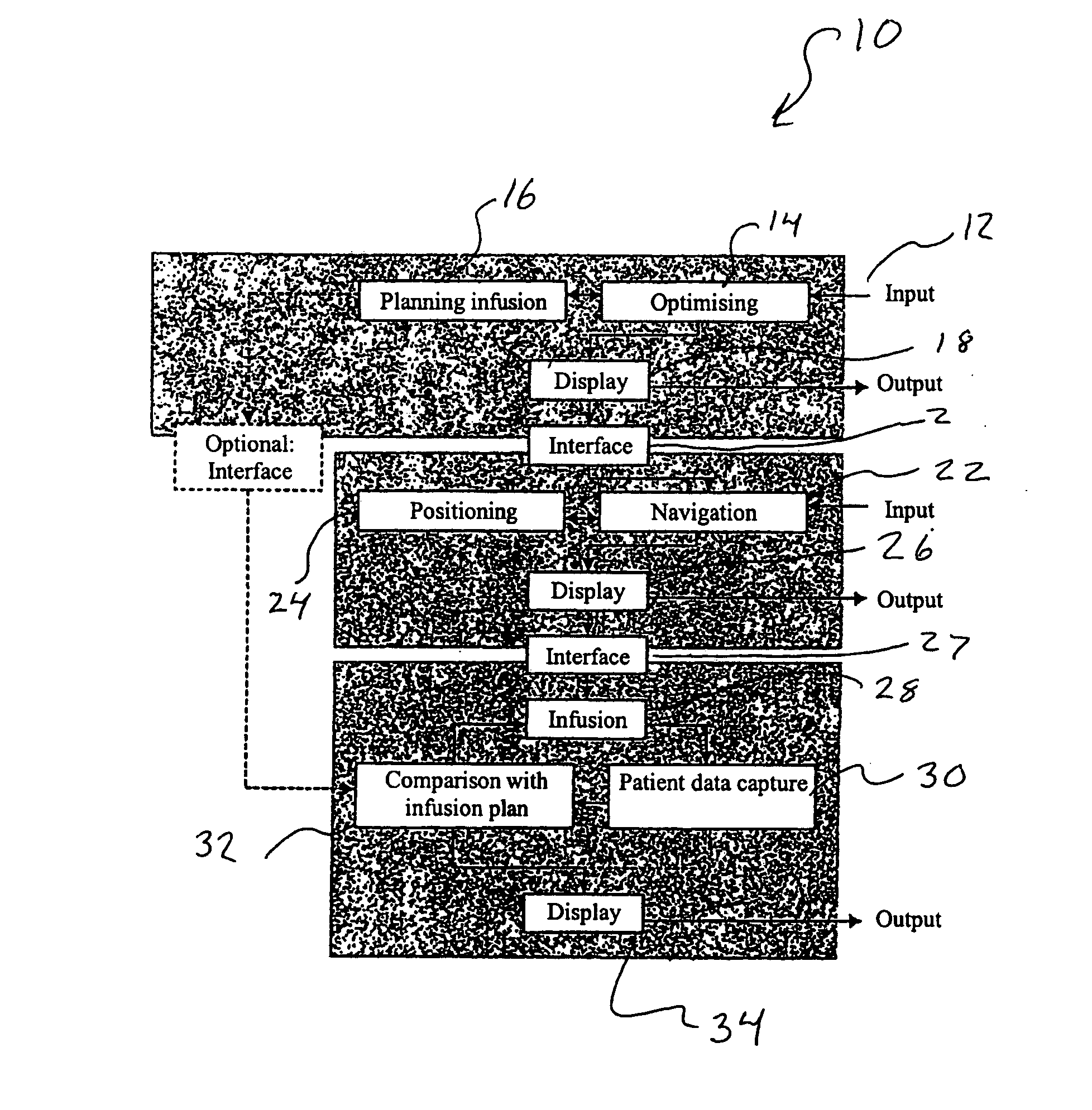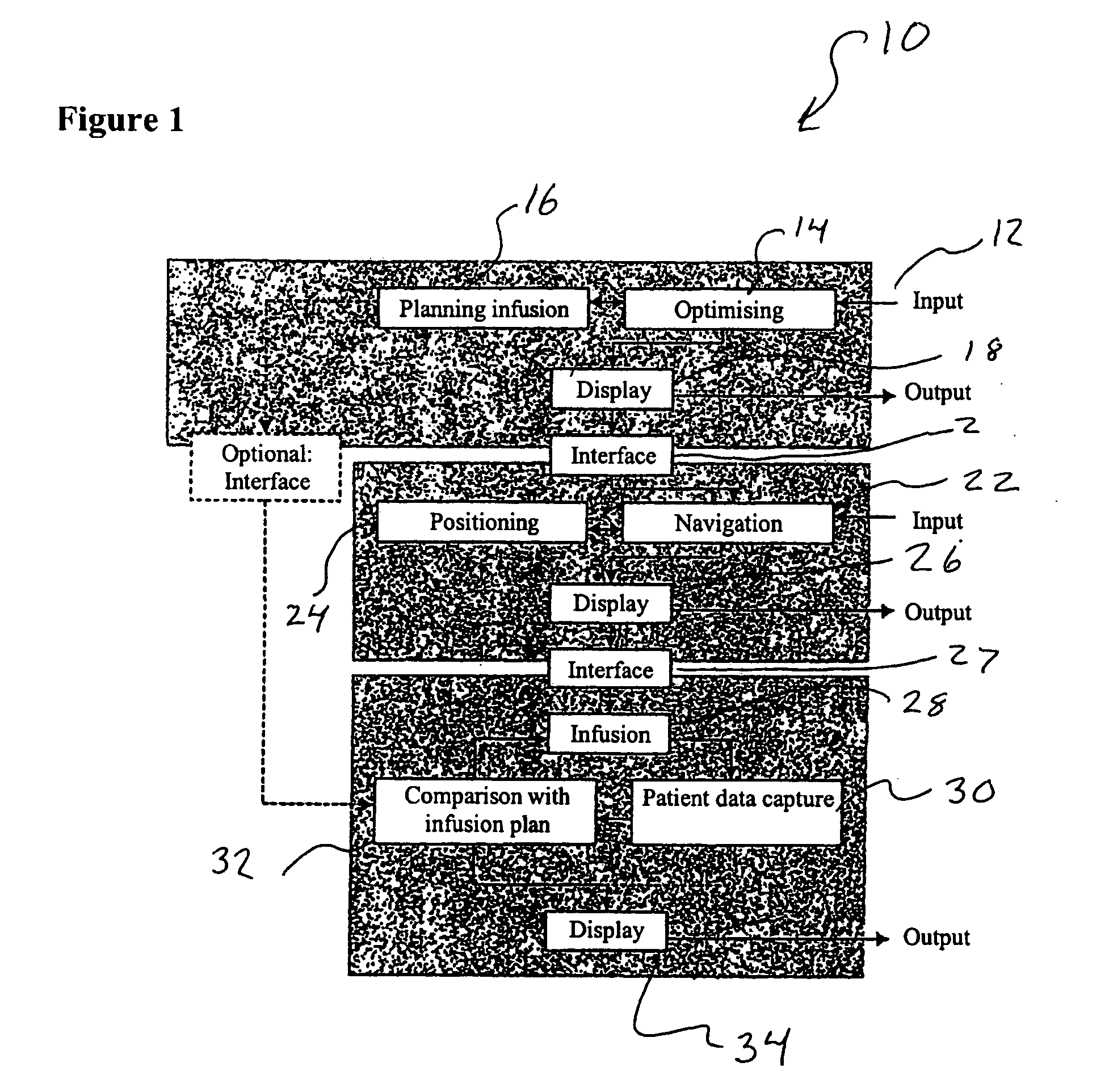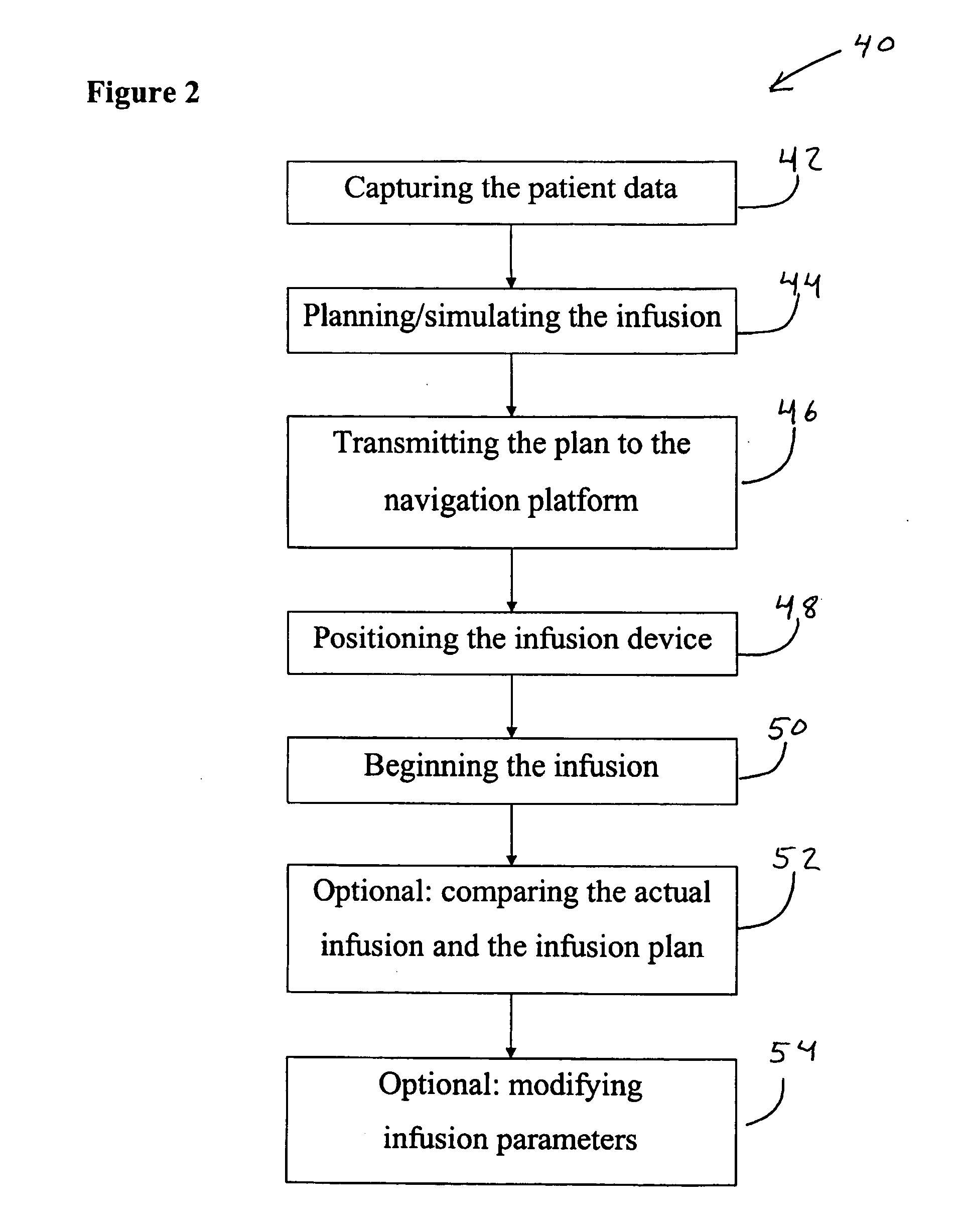Method and device for planning a direct infusion into hepatic tissue
a technology of hepatic tissue and direct infusion, which is applied in the field of direct infusion into hepatic tissue, can solve the problems of affecting the entire body, a large amount of chemotherapeutic agents entering, and a large amount of substances fed to the liver, so as to improve the time of effectiveness and/or concentration of infusion agents, reduce the effect of blood flow, and optimize treatment effects
- Summary
- Abstract
- Description
- Claims
- Application Information
AI Technical Summary
Benefits of technology
Problems solved by technology
Method used
Image
Examples
Embodiment Construction
[0038]FIG. 1 schematically shows a flow diagram 10 for preparing and performing an exemplary liver infusion. As shown in FIG. 1, at block 12 patient data, for example, are input from a nuclear spin tomograph and used to ascertain a particular target region of tissue in the liver (e.g., in or in the vicinity of a hepatoma) for the infusion and to plan the infusion dosage to be supplied. These data can be obtained by the nuclear spin resonance system 60, for example, as shown schematically in FIG. 3, once a patient to be treated has been examined. Using parameters for the properties of the tissue structures, infusion agents and different types of catheters, one or more infusion agents and / or catheters which are suitable for the infusion can be selected once the exact position of the tissue volume to be treated has been ascertained. The parameters, for example, can be stored in one or more databases. At blocks 14 and 16, the patient parameters obtained, for example, by the nuclear spin...
PUM
 Login to View More
Login to View More Abstract
Description
Claims
Application Information
 Login to View More
Login to View More - R&D
- Intellectual Property
- Life Sciences
- Materials
- Tech Scout
- Unparalleled Data Quality
- Higher Quality Content
- 60% Fewer Hallucinations
Browse by: Latest US Patents, China's latest patents, Technical Efficacy Thesaurus, Application Domain, Technology Topic, Popular Technical Reports.
© 2025 PatSnap. All rights reserved.Legal|Privacy policy|Modern Slavery Act Transparency Statement|Sitemap|About US| Contact US: help@patsnap.com



